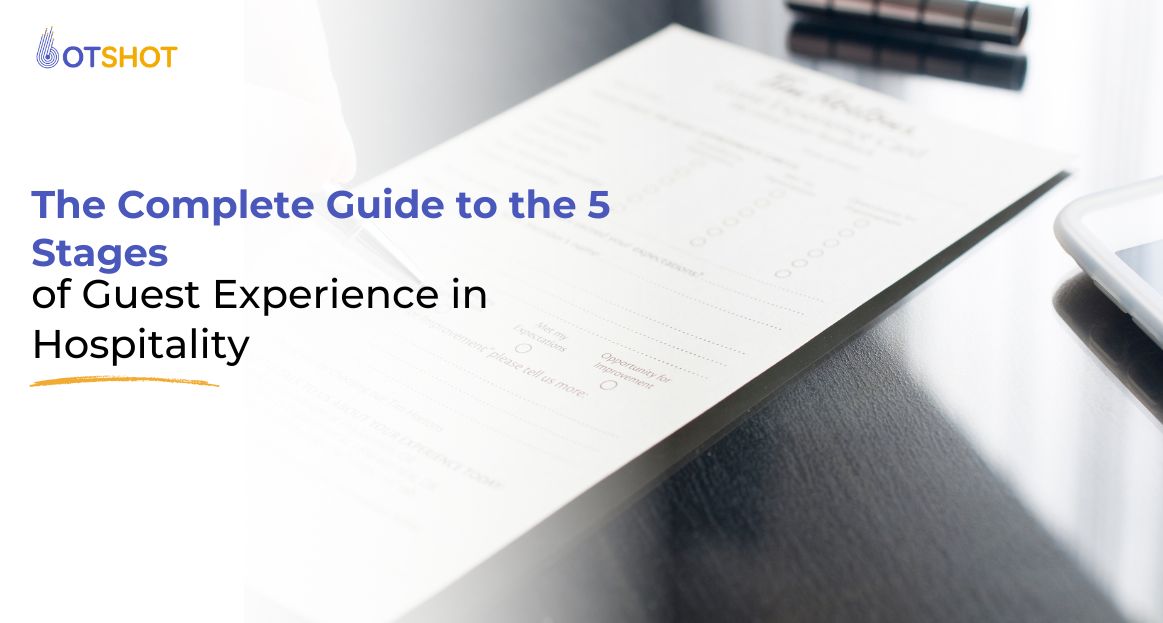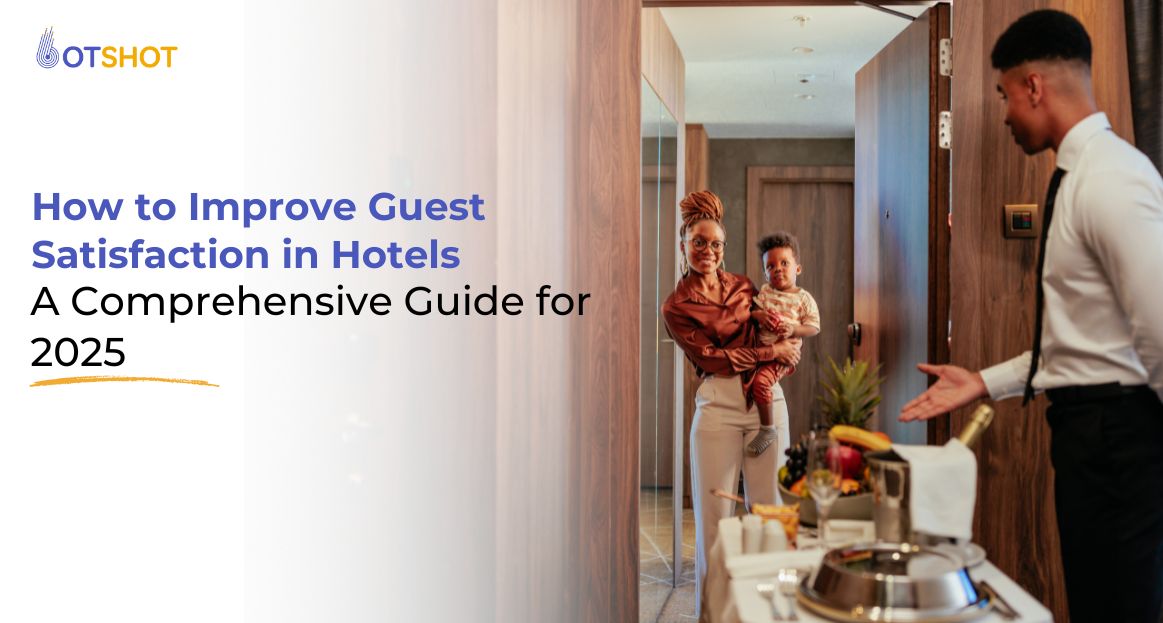The Complete Guide to the 5 Stages of Guest Experience in Hospitality

Providing excellent service to guests is the main goal in a competitive hospitality market. By understanding the guest journey map, hoteliers can identify and improve moments of hotel guest interaction with the business, thereby enhancing their experience and loyalty. By covering the five stages of hotel guest service, this guide shows readers how to improve results in each part of the guest journey.
Understanding the Guest Journey Map
A guest journey map shows the full experience a guest has with the hotel, starting from contact till departing. Planning the guest journey makes it easier for hotel owners to notice important guest touchpoints and ideas for improving the experience.
Stage 1: Pre-Arrival
Importance of Pre-Arrival Communication
This early part of the guest’s experience guides what happens during their stay. At this stage, clear communication can make people excited and trust your team. Strategies include:
- Personalized Emails: Send customized messages with recommendations after someone books.
- Travel Tips: Include things to do in the area and advice on transportation.
- Special Requests: Let guests write in special requests or things they want on the registration page.
Leveraging Technology
Employ Botshot.ai or similar tools to automatically manage pre-arrival messaging and make guests feel appreciated from the start.
Stage 2: Arrival
Streamlining the Check-In Process
How a guest is welcomed when they arrive is very important for shaping their opinion. To support students in this stage:
- Efficient Check-In: Improve the check-in area by making contactless or swift check-in possible.
- Warm Welcome: Have staff welcome guests warmly and talk to them using their names.
- Lobby Ambience: Make sure the reception area is always tidy, warm, and informative for visitors.
First Impressions Matter
Having a smooth check-in helps guests enjoy their trip from the very start. Focusing on training and managing lobby appearance rewards a hotel with repeat guests.
Stage 3: Stay
Enhancing On-Site Service Interaction
The stay is the key part of the guest experience. Major areas of importance are:
- Room Comfort: Keeping the rooms clean and functioning is very important.
- Staff Responsiveness: Enable employees to meet the demands of guests rapidly when required.
- Amenities: Provide quality services such as restaurants, entertainment, and health options.
Real-Time Feedback
Get feedback from guests during their stay with surveys or messaging apps to make sure any problems are dealt with promptly.
Stage 4: Departure
Making Farewells Memorable
The guest has their last face-to-face experience with the hotel during this phase. To influence people positively:
- Express Check-Out: Provide easy and stress-free options for finishing payment and leaving the store.
- Personal Goodbyes: Wave personally to each guest and ask them to come back.
- Feedback Requests: Offer guests the chance to tell others about their experience.
Transitioning to Post-Stay Engagement
If your departure is done thoughtfully, it helps ensure customers will stay connected and are willing to return.
Stage 5: Post-Stay
Collecting Post-Stay Feedback
Talking to guests after they leave helps you keep improving your service. Strategies include:
- Surveys: Send individually crafted surveys to get useful feedback.
- Review Monitoring: Watch for online reviews and react to them right away.
- Loyalty Programs: Allow guests to earn rewards every time they book again.
Building Long-Term Relationships
Keeping in touch with guests after their visit helps build loyalty and leads to more referrals from guests.
Measuring Hotel Service Quality
Key Guest Satisfaction Metrics
Check and improve service quality by reviewing these metrics.:
- Net Promoter Score (NPS): The Net Promoter Score (NPS) shows how likely your hotel guests are to recommend you.
- Overall Satisfaction Score: Generally how pleased the guests are with their stay.
- Department-Specific Ratings: Evaluate how the company works within each department.
- Problem Resolution Rate: Problem Resolution Rate measures the ability of the hotel to handle guests’ complaints.
- Review Sentiment Analysis: Looks at the attitude expressed in online reviews.
Utilizing the SERVQUAL Model
Services are judged for their quality according to the five important areas covered in the SERVQUAL model.:
- Reliability: The ability to provide the same high-quality service at every chance.
- Assurance: What you get from the staff is good service and polite behavior.
- Tangibles: Tangibles refer to things like buildings, machines, and equipment.
- Empathy: Giving guests special attention.
- Responsiveness: Quick service and a willing desire to help you.
Enhancing Hospitality Customer Service
Training and Empowerment
Provide thorough training to every team member so they can give excellent service to guests. Involve staff in making choices that help improve guest satisfaction.
Leveraging Technology
Hire Botshot.ai for automating tasks, so staff can concentrate on one-on-one relationships with guests. It is now possible to communicate and collect feedback promptly with students because of technology.
Continuous Improvement
Go over the replies of guests and the service scores regularly to find where adjustments are needed. Apply improvements right away when improvements are needed.
FAQs
What is a Guest Journey Map?
A guest journey map diagrams the experiences guests go through from getting in touch with the hotel through any ongoing communication. It highlights places where it is good and helpful in suggesting ways to do better.
Why is Pre-Arrival Communication Important?
Good communication ahead of arrival raises guest expectations, creates excitement, and allows hotels to offer personal touches, bettering their stay.
How Can Technology Improve the Check-In Process?
Contactless check-in made possible by technology reduces the time guests need to wait and allows them to get their rooms quickly.
What Metrics Are Essential for Measuring Guest Satisfaction?
Net Promoter Score (NPS), satisfaction ratings, ratings per department, how problems are handled, and analyzing reviews are important measures to look at.
How Does Post-Stay Engagement Benefit Hotels?
After a guest’s stay, connecting with them can lead to returning customers, go a long way in making the service better, and ensure loyalty.
Conclusion
Paying attention to and improving every step of the guest’s journey is very important for hospitality companies. Service quality, guest enjoyment, and lasting relationships can be improved by identifying the main customer points of contact and by using tools like Botshot.ai. Investing time in making guests happy helps individuals and also boosts both the hotel’s reputation and income.
About the Author
Sameer Gupta has extensive experience in SEO and hotel technology and is now leading content work at Botshot.ai. With 7 years working in the travel and hospitality industry and significant experience in digital marketing, Sameer specializes in using AI to make sure hospitality services meet guest expectations. For top brands such as The Leela and Radisson Blu at Botshot.ai, he helped them arrange their guest journey maps well, touch guests at important points, and ensure satisfaction by introducing contactless check-in and ongoing feedback. Sameer likes using data analysis to boost hospitality service and is often featured in key publications about improvements in hotels, metrics, and engagement for guests. His material demonstrates E-A-T-E principles (Expertise, Authoritativeness, Trustworthiness, and Experience) and it provides useful information combined with applications and verified studies. If you’d like to find out more about how Sameer does his work or discover how Botshot.ai can improve your hotel’s services, visit the website www.botshot.ai.
Note: IndiBlogHub features both user-submitted and editorial content. We do not verify third-party contributions. Read our Disclaimer and Privacy Policyfor details.





